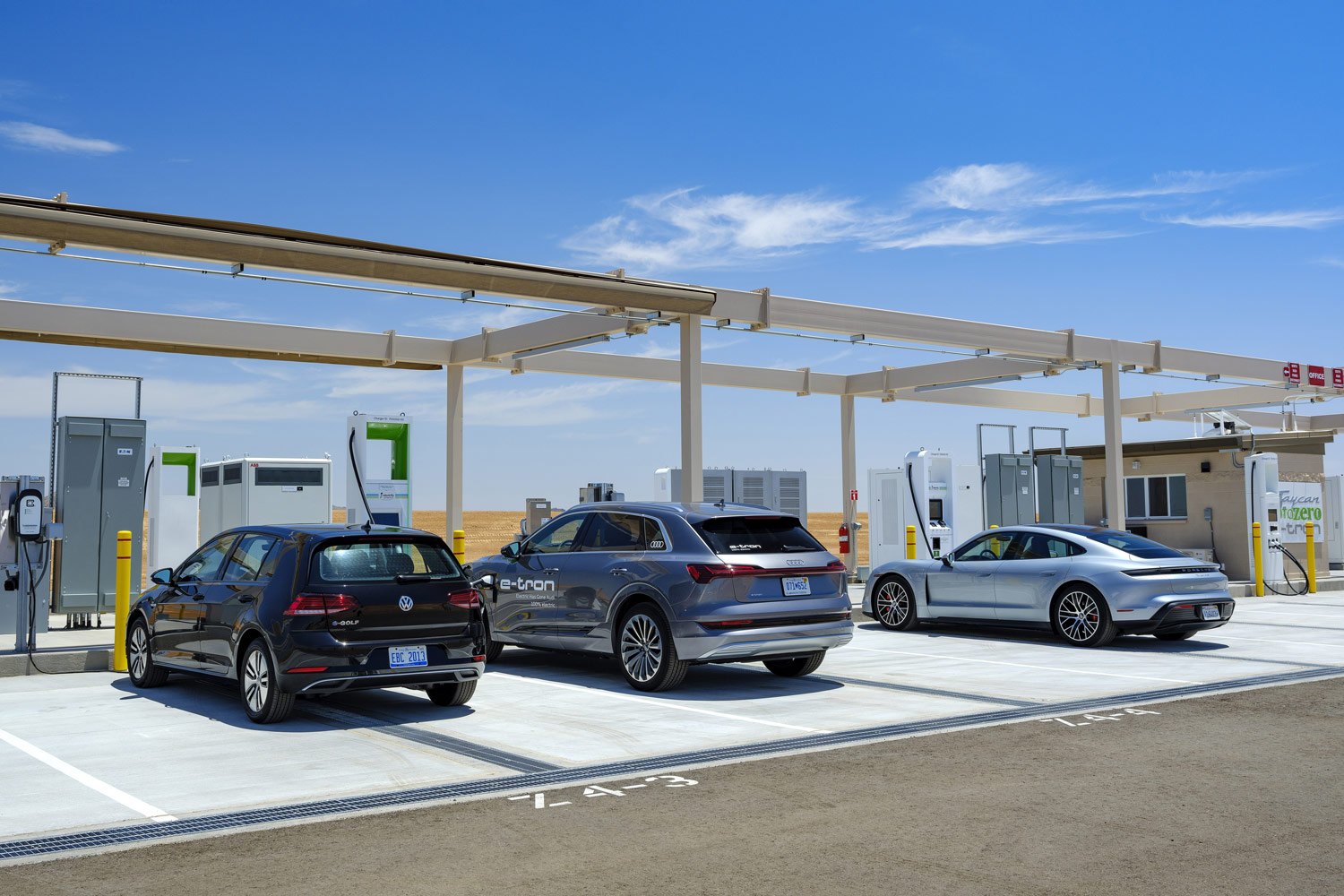What Is a Solid-State Car Battery?
A next-generation battery design could power future electric vehicles, making them a more practical choice for more Americans.
 Volkswagen
Volkswagen
For an increasing number of people, owning an electric vehicle is becoming more appealing all the time—especially with rising gas prices these days. But for many others, well, they’re just not ready yet. For all the benefits of EVs, the downsides are still there: higher purchase prices, lengthy recharge times, and driving range anxiety.
But the EV revolution has already started, and technological advancements seem sure to make them even more desirable down the road. Case in point: the quick-charging and long-lasting solid-state battery.
How Are Solid-State Car Batteries Different?
In simple terms, all batteries have two electrodes: an anode (otherwise known as the “negatively charged” terminal) and a cathode (the “positively charged” terminal). Most new EVs feature current lithium-ion battery technology. This type of battery sees lithium ions move through a liquid electrolyte from the anode to the cathode, generating an electric current that is used to power the vehicle.
The key point here is the liquid, which has the downside of being volatile and flammable under certain circumstances. That’s the biggest part solid-state batteries aim to change, since they employ a solid electrolyte material (such as ceramic) between the anode and cathode to carry electric current.
What Are the Potential Advantages of Solid-State Batteries?
The idea of solid electrolyte was discovered by Michael Faraday back in the 1830s, but solid-state batteries have only progressed at a decent pace since the 1990s. With the advent of modern-day conveniences such as mobile phones, the idea of creating smaller, lighter, more powerful, and longer-lasting batteries has accelerated. Currently, solid-state batteries are used in pacemakers, wearable activity trackers, and radio-frequency identification tags.
Suppose these batteries make their way into EVs. In that case, they could offer greater energy density (so more range per battery cell), faster recharging (possibly as much as four to six times faster than regular ol’ lithium-ion), and a longer lifespan. They would also be safer. Liquid electrolyte is volatile and flammable, requiring extra safety measures to ensure nothing goes sideways.
Finally, solid-state batteries would require fewer finite resources, so they could also represent a net benefit to the environment. According to Transport and Environment, the leading clean transport advocacy group in Europe, the carbon footprint of a solid-state battery could be as much as 39% less than that of a lithium-ion battery.
Who Makes Solid-State Car Batteries?
In a
When Will Solid State Batteries Be Available in EVs?
Solid-state batteries are not ready for primetime in vehicles yet. They’re still too expensive to manufacture at scale, and the technology requires more fine-tuning.
QuantumScape aims to have a commercially viable solid-state battery by 2024, so look out for the next generation of battery-electric VW vehicles. Toyota aims to sell its first vehicle powered by a solid-state battery by 2025, but that will be a hybrid—a full EV will follow afterwards. BMW is aiming to have a prototype by 2025, and a production vehicle with solid-state batteries by 2030.
Written by humans.
Edited by humans.
 Mark Hacking
Mark HackingMark Hacking is an award-winning writer with more than 20 years experience covering the automotive scene for some of the world's most popular publications. Mark holds an FIA International Race license and has his sights set on competing in the Rolex 24 at Daytona in the future. He was the first automotive journalist to race in the Ferrari Challenge series (in 2013) and the Jaguar I-PACE eTrophy series (in 2019).
Related articles
View more related articles